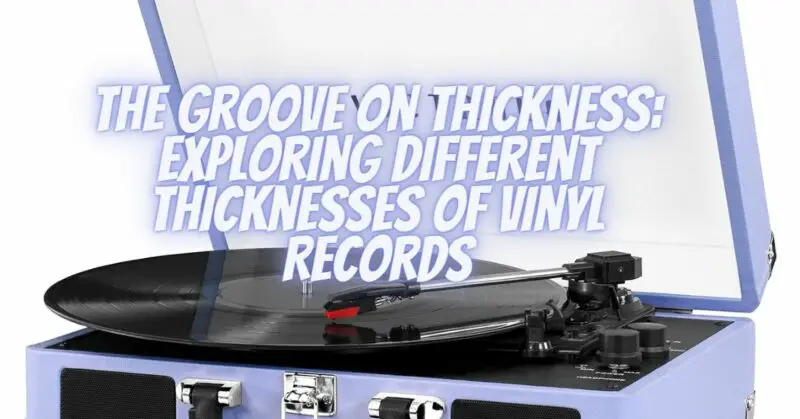Vinyl records have been a beloved medium for music enthusiasts for decades, known for their iconic grooves and analog warmth. While the standard diameter of vinyl records is 12 inches (30 centimeters), many collectors and audiophiles may be surprised to learn that vinyl records also come in different thicknesses. In this article, we will delve into the various thicknesses of vinyl records, their significance, and the factors that influence their use.
- Standard Thickness (Standard Weight Vinyl)
Thickness: Most vinyl records are pressed using standard thickness, which is typically 120 to 140 grams. This is often referred to as “standard weight” vinyl.
Common Usage: Standard thickness is the most widely used for vinyl records. It is suitable for most albums and offers a balance between sound quality and durability.
- 180-Gram Vinyl
Thickness: 180-gram vinyl is significantly thicker than standard weight vinyl, often exceeding 180 grams. This heavyweight vinyl is sometimes referred to as “audiophile grade.”
Common Usage: Audiophiles and collectors often prefer 180-gram vinyl because it tends to offer improved sound quality, reduced surface noise, and increased durability. Many reissues of classic albums are pressed on 180-gram vinyl.
- 200-Gram Vinyl and Beyond
Thickness: Some vinyl records are pressed on even thicker vinyl, exceeding 200 grams. These records are considered “ultra-heavyweight” or “super vinyl.”
Common Usage: Ultra-heavyweight vinyl is a premium choice for audiophiles seeking the highest sound quality and durability. These records can provide enhanced bass response and reduced vibrations during playback.
- Picture Discs
Thickness: Picture discs are typically thinner than standard vinyl records and are known for their unique appearance. They consist of a thin vinyl layer with a printed image pressed between two clear plastic sheets.
Common Usage: Picture discs are more of a novelty item and are less commonly used for serious listening due to their potential for increased surface noise and lower audio fidelity.
Factors Influencing Thickness
Several factors influence the choice of vinyl thickness for a particular record:
- Sound Quality: Thicker vinyl records tend to offer better sound quality, with improved bass response and reduced surface noise. Audiophile releases often use thicker vinyl to optimize the listening experience.
- Durability: Heavier vinyl is more durable and less prone to warping or damage during storage and handling. This is especially important for collectors and long-term preservation.
- Special Editions: Some records, particularly special or limited editions, are pressed on heavyweight vinyl to make them stand out and appeal to collectors.
- Cost: Thicker vinyl is more expensive to manufacture, which can influence the pricing of records. Audiophile-grade releases typically come at a higher cost.
Conclusion
Vinyl records indeed come in different thicknesses, and the choice of thickness can significantly impact sound quality, durability, and cost. Audiophiles and collectors often seek out thicker vinyl records for the enhanced listening experience and long-term preservation benefits. However, it’s essential to remember that the quality of a vinyl record depends on various factors, including mastering, pressing quality, and your turntable setup. So, while thicker vinyl can enhance your vinyl experience, it’s not the sole determinant of a great-sounding record.


